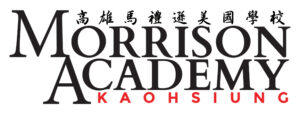Fostering Inspired Thinking 培育激發思考
This summer I read a great book by George Couros that I particularly enjoyed because it resonates with a number of the thoughts I’ve shared in this space. In the opening pages of The Innovator’s Mindset he writes:
今年夏天我讀了一本讓我特別享受在其中的好書,這本是喬治庫羅斯(George Couros)的著作。因為它與我先前在這裡分享過的文章有許多共鳴之處。在《創新者的心態》一書的前幾頁中寫道:
“Inspiration is one of the chief needs of today’s students. Kids walk into schools full of wonder and questions, yet we often ask them to hold their questions for later, so we can ‘get through’ the curriculum. We forget that our responsibility isn’t solely to teach memorization or the mechanics of a task but to spark a curiosity that empowers students to learn on their own. To wonder. To explore. To become leaders. We forget that if students leave school less curious than when they started, we have failed them.”
「靈感是今日學生們首要的需要之一。孩子們滿懷好奇與疑問地走進校園,而我們常常要求他們晚一點再問問題,這樣我們才能夠「上完」課程。我們忘記了我們的責任不單是教導背誦或是培養學生解決任務,而是增強他們的好奇心,讓他們可以藉此自我學習、求知、探索,並成為領導。我們忘記了一件事,假使學生留在學校裡,但是比起他們剛進校門時,更沒有什麼好奇心,那我們就是失敗了。」
Education shouldn’t be about hoop-jumping. It should be about passion and inspiration. That isn’t to say that all traditional elements of education should be thrown out the window. I had a fairly traditional schooling, and to be perfectly honest, some of my most inspired moments have come while sitting and listening to a lecture. But if we are allowing our students to go through school passively and to not find passion within our walls, we are doing a major disservice to their creative minds. I want education to mean something to our students, whether it’s a matter of action or character.
教育不應該是受盡折磨、全盤接受,它應該是與熱情和靈感有關的。這並不是說要揚棄所有教育的傳統要素,我也接受過相當傳統的學校教育,而且必須相當誠實地說,某些我受到最多啟發的時刻是我坐在課堂上聽課的時候。如果我們孩子很被動地來學校,在內心也找不到任何的熱情,我們則是對他們富創造力的心靈上造成傷害。我希望不論是行為或是文字,教育對學生而言都是有意義的。
One way that we’re trying to foster passion in our high school program at MAK is through providing a regular chance for our students to very tangibly pursue our values of risk-taking, questioning, and collaborating. This year, three times each week, our schedule includes a genuine elective period in which high school students can pursue a passion and explore it.
在馬禮遜的高中部,我們試著透過定期的提供機會,讓學生們切實地追求冒險、提問與協同合作來培養熱情。今年,我們的課程中包含每週三次的選修課,讓高中生可以追求並探索熱情。
The beauty of this elective period is that it offers students choice. When we choose to pursue an interest, we don’t have to fake passion. We actually want to ask questions and to take risks, because we’re desperate to know.
選修課程的美妙之處在於它提供了學生選擇。當我們選擇去追求一樣興趣時,我們不會缺乏熱情。事實上,因為我們急切地想知道,所以我們反而特別想提問並冒險。
Additionally, each of these classes pushes students to think for themselves. As “homework lite” courses, class periods focus on lots of in-class collaboration that emphasizes creation and discussion over practice and memorization. Today I paid a visit to each of these elective classes, and student engagement was fantastic. What was even more encouraging was that in each group teachers were working to “coach” students more than they were to “tell” them, putting student learning truly at the center.
另外,每種課程都迫使學生去自我思考。選修課程是屬於「少量回家作業」的課程,它的焦點在於強調創意與討論多於練習與背誦的大量課間合作上。今天我花了點時間到每個選修課去,看到學生們的學習投入度都非常棒。最激勵人的部分是,每一門選修課的老師是真正地以學生為學習中心,「指導」他們多於「告知」他們學習的方向。
 In Ms. Zrinsky’s mixed ensemble course, students worked in sections to hammer out their parts. This allowed for peers to correct each other and individuals to play a leadership role in directing the larger sections. In Ms. Shaffner’s graphic design course, students debated the intentions behind a photojournalist’s image choices. Mrs. Newkirk’s drawing class applied their studies in portraiture by creating self portraits. Students in Speech and Drama worked in groups to map out a performance of a speech from As You Like It[1], trying to come to a compromise on their differing ideas. Mr. Muir’s Contemporary World Issues course struggled as a group to determine the purpose of a particular tariff, and Ms. Brown’s students in Advanced Creative Writing spent the full period blitz-writing from a prompt. Later in the week they’ll each have the chance to edit, keep, scrap, and edit again until it’s just the way they intended. Finally, students in Mr. McDillon’s robotics class continued their robot construction so that they can begin the adventure of programming them.
In Ms. Zrinsky’s mixed ensemble course, students worked in sections to hammer out their parts. This allowed for peers to correct each other and individuals to play a leadership role in directing the larger sections. In Ms. Shaffner’s graphic design course, students debated the intentions behind a photojournalist’s image choices. Mrs. Newkirk’s drawing class applied their studies in portraiture by creating self portraits. Students in Speech and Drama worked in groups to map out a performance of a speech from As You Like It[1], trying to come to a compromise on their differing ideas. Mr. Muir’s Contemporary World Issues course struggled as a group to determine the purpose of a particular tariff, and Ms. Brown’s students in Advanced Creative Writing spent the full period blitz-writing from a prompt. Later in the week they’ll each have the chance to edit, keep, scrap, and edit again until it’s just the way they intended. Finally, students in Mr. McDillon’s robotics class continued their robot construction so that they can begin the adventure of programming them.
[1] As You Like It是英國文豪莎士比亞的四大喜劇之一,中譯本為《皆大歡喜》。台灣遠東圖書出版的版本為梁實秋版,其譯名為《如願》。
在Zrinsky老師的樂團課程中,學生要分組討論以完成他們的部分,組員之間可以互相改正,而每個人都可以在這段較長的分組時間中,直接扮演領導者的角色;Shaffner老師的攝影設計課中,學生要針對攝影記者的取景其背後的意圖辯論;Newkirk老師的繪畫課讓學生能夠透過在人物繪畫課中所學習到的技巧,進而創造出屬於他們的自畫像;上「演說與戲劇」的學生透過分組,試著融合他們自身不同的想法來計畫並表演《皆大歡喜》;Muir老師的「全球時事議題」課程裡則致力於界定特別關稅的目的;Brown老師的「進階創意寫作」課,學生需要利用老師提供的一個提示,在課堂上完成即席寫作。每週末了,他們都有機會可以編輯、保留、捨棄並再次編輯,直到他們滿意為止;最後,McDillon老師的機器人課程則繼續在機器構造研究,讓他們可以開始進行程式設計的未知之旅。
Building a learning culture that is driven by genuine curiosity and a demand for meaning is not an easy task. But this year our high school elective courses are taking us one step closer to that goal, one step closer to the heart of the best kind of education – an inspired one.
建立一個由真實的好奇心與意義需求導向的學習文化不是件容易的事。但是今年我們的高中選修課程,讓我們離目標更進一步,離最好的教育核心—受啟發的教育—又更近了一步。
